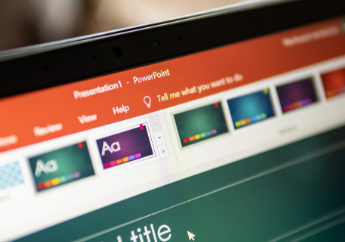
Wachiwit/ Shutterstock
When the pandemic hit, I was scheduled to visit several dozen campuses in the coming months to do teaching workshops for faculty (pedagogy can indeed improve student outcomes!) All of my face-to-face visits for 2020 were eventually canceled, although I did a lot of webinars that summer about preparing to teach online in the fall.
As my higher education workshops thinned with the spread of COVID-19, corporate America was increasing its desire for inclusion and innovation training. My work on pedagogy and inclusion in the classroom seemed to prepare me to start doing some corporate training.
The first thing I discovered was that my assumptions about bad institutional training were out of date. Yes, there will always be painful required trainings, but my experience so far (with more than a dozen Fortune 500 companies) is that when companies are paying more, they demand more quality of teaching-being an expert was not enough. My learning outcomes, materials, activities, and teaching methods were scrutinized thoughtfully and carefully, and then I was asked (often through several iterations of the same content) to “beta-test” my classes. I have given countless dry runs to sample students and learning designers who then provided useful and detailed feedback about how I could improve my teaching. I also often give the same class multiple times, which provides another way to improve.
Along the way, I discovered that my slides really had to tell the story. I already knew PowerPoint basics (my expertise is supposed to be pedagogy): no more than six words and a single idea on a slide, vivid images that crystalize but don’t distract, and people are going to want my slides as a summary for my sessions. My slides were taking on a life of their own.
Written communication is still critically important in business and in life, but most writing is limited to emails and short report summaries. (And have you noticed how even academic books are getting shorter?) But there is a new currency of communication outside of the academy, and it is the slide deck.
There is constant complaining that college grads do not know how to make slides, do presentations, and assemble a “good deck.” I knew that my slides were an important tool as part of my pedagogy, but I forgot that many students also use them as a proxy.
We know that there is more and more visual communication in the world, but I confess I was surprised when I discovered that PowerPoint presentations were being used, just on their own, as a means of spreading ideas. The 126 slides of Netflix Culture Deck from 2009 by CEO Reed Hastings and Chief Talent Officer Patty McCord have over 5M views on the web. It has been called one of the most important documents to come out of Silicon Valley.
Most of us have probably had the experience of missing a meeting or presentation and being given the slides instead. (Now post-pandemic, you might also be given the Zoom recording, but who has the time?) “Reading” a deck is faster than listening to a presentation.
There is surely more nuance and detail in almost any article, book, or presentation, but as the world fills up with content and we become busier by having to deal with too much of it, we look for shortcuts. The Netflix Culture Deck became a Harvard Business Review article (How Netflix Reinvented HR) in 2014 and the basis of a book (No Rules Rules: Netflix and the Culture of Reinvention) in 2020, but neither had the same readership or impact as the PowerPoint slides. The slide deck has become that shortcut and is now an important form of communication on its own.
I am hardly arguing for the elimination of the essay, but it is clear that after graduation an incredibly few students will write an extended research paper ever again. Virtually all of them, however, will need to pitch ideas, communicate feedback, or articulate analysis in either short memos or in PowerPoint presentations. We’ve accepted the idea that people can communicate in different ways, and we’ve all gained insight or learned something important from a TED talk. We have also all delivered and have been a victim of a poor PowerPoint presentation. We’ve even seen people ascend to the positions of high office using a Twitter feed, and yet we continue to act as if the slide deck is not becoming a new means of communication in the world.
There was a time when the oration and the spoken word were required curriculum, but as technology and communication changed, we supplemented and eventually replaced this with writing. Some curricula now require presentation skills courses, but at least in humanities courses, we mostly still rely on a kind and length of written communication that is most useful in graduate school. The world now communicates in different ways and perhaps, at least some of the time, we, and our students, should too.
Disclaimer: HigherEdJobs encourages free discourse and expression of issues while striving for accurate presentation to our audience. A guest opinion serves as an avenue to address and explore important topics, for authors to impart their expertise to our higher education audience and to challenge readers to consider points of view that could be outside of their comfort zone. The viewpoints, beliefs, or opinions expressed in the above piece are those of the author(s) and don’t imply endorsement by HigherEdJobs.

